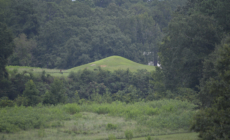-
Trump Got the Green Light to Fire Federal Workers. Now, They Wait. - 25 mins ago
-
Worker advocates arrested after tire spikes found at immigration raid - 31 mins ago
-
Store Closures On Track to Far Exceed 2024 Levels - 34 mins ago
-
Jailed Kurdish Leader Declares the End to PKK’s Armed Struggle In Turkey - about 1 hour ago
-
Princess Kate Moment That Turned William’s Head Goes Viral - about 1 hour ago
-
L.A. firestorms and Texas floods show communities are ill-prepared for worsening climate disasters - about 1 hour ago
-
Russia Reacts to Trump Saying He Threatened to Bomb Moscow - 2 hours ago
-
After Decades of Hostility, Israeli-Syrian Relations Begin to Thaw - 2 hours ago
-
China Responds After Reports Iran Seeks J-10 Fighter Jets - 2 hours ago
-
The World’s Best and Brightest Are Moving, but Not to America - 3 hours ago
In Tibet, Earthquake Survivors Face Freezing Weather Conditions
Rescuers working in subzero conditions and bracing winds searched the rubble on Wednesday after a strong quake in Tibet toppled thousands of houses in a remote area near the northern foothills of Mount Everest. Tens of thousands of residents were being transferred to safety while dozens were being treated for injuries.
At least 126 people have died and 188 were injured in the quake, which struck on Tuesday morning in Dingri County, near one of Tibet’s most historic cities, in western China, state media reported. The quake was China’s deadliest since December 2023, when 151 people were killed in a magnitude 6.2 temblor in the northwestern provinces of Gansu and Qinghai.
The area has since recorded 660 aftershocks, some exceeding a magnitude of 3.0, Chinese state media said. Survivors and rescuers have had to brave freezing temperatures, as the mercury dropped to a low of minus 18 degrees Celsius or 0 Fahrenheit at night. Recent aerial images near the epicenter showed frozen lake surfaces, and temperatures are expected to remain low for the next three days, which could narrow the window for rescuing survivors.
The true extent of the damage was hard to determine independently. Tibet is one of the most inaccessible and underdeveloped parts of China. Security has been heightened for decades because of tensions between Beijing and Tibetans, many of whom have struggled to maintain their cultural identity and religious traditions in a country dominated by Han Chinese. Foreign journalists are forbidden from traveling independently in the region.
Much of the relief effort is focused on warding off the cold. The state broadcaster showed video footage of rescuers setting up tents draped with an insulated layer and rigging them with light panels powered by generators as displaced residents draped in blankets huddled on cots and chairs.
Zhang Guoqing, the vice premier, visited hospitals and tent camps on Monday night. He instructed rescue teams to focus on finding remaining survivors, delivering medical care for the infirm, and ensuring that the displaced have enough food and warmth to survive the frigid winter.
Rescuers have pulled out more than 400 survivors from the rubble overnight. More than 30,000 people were relocated to safety.
Chinese state media reported that road obstructions have been cleared, and electricity has resumed in most surrounding towns and villages. The state broadcaster showed footage of soldiers digging through rubble with gloved hands and shovels.
Li You contributed research in Beijing.




















